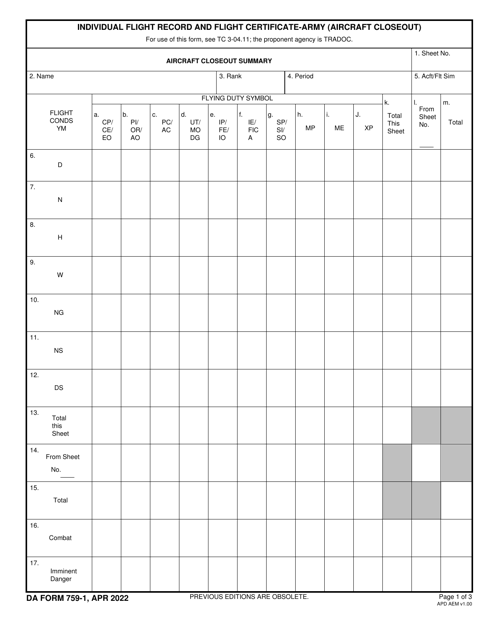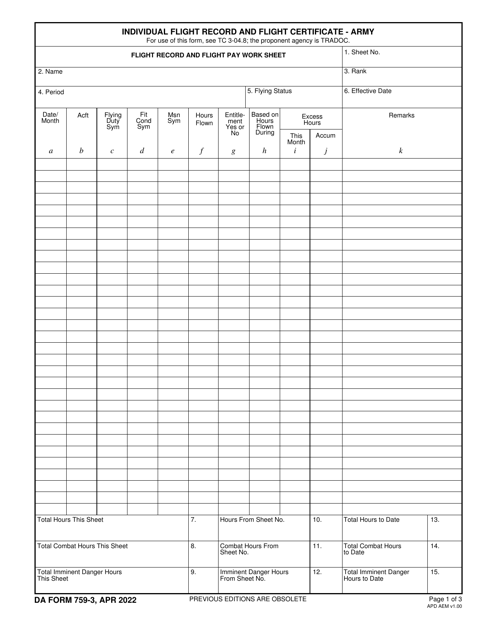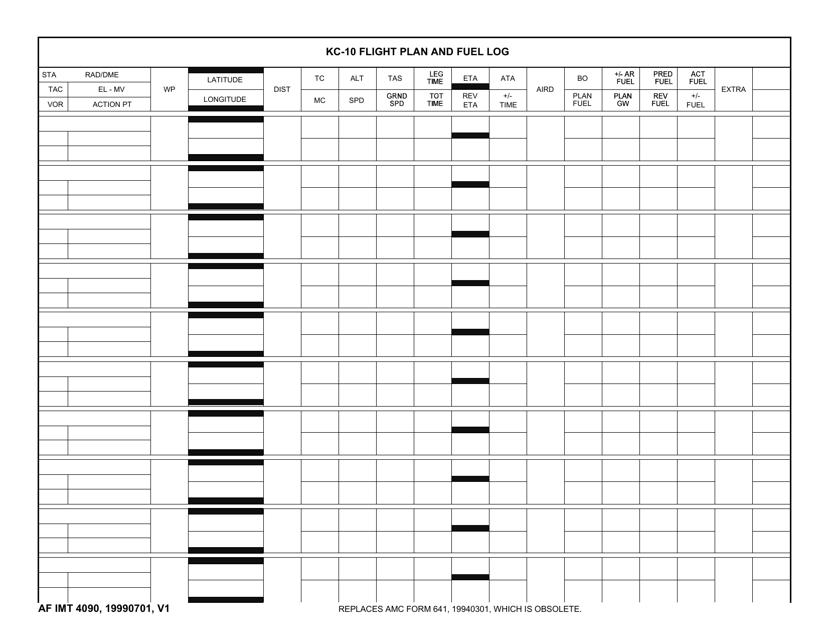Flight Records Templates
Flight Records (also known as flight record or flight recording) are important documents that play a crucial role in the aviation industry. These records provide a comprehensive record of various aspects related to flights, ensuring that all necessary information is documented and easily accessible.
Aviation personnel, including pilots, crew members, and air traffic controllers, rely on flight records to maintain accuracy and compliance with regulations. These records serve as an essential tool in tracking and documenting flight activities, fuel consumption, flight plans, and other critical flight-related data.
One example of a flight record is the DA Form 759-3 Individual Flight Records and Flight Certificate-Army (Flight Pay Work Sheet), which is used by the Army. This document helps track individual flight hours, ensuring accurate compensation and records for Army personnel.
Another example is the AF IMT Form 4090 Kc-10 Flight Plan and Fuel Log, which is used by the Air Force. This document allows the crew to plan and record fuel consumption and other essential flight information for the KC-10 aircraft.
Additionally, the AF IMT Form 270 Aero Club Operations is used by Aero Clubs to document various flight activities, such as aircraft rentals and flight training. These records are crucial for maintaining a safe and organized flight environment within the club.
Flight records are also utilized by organizations like the Civil Air Patrol (CAP). The CAP Form 109U Sortie Flight Log is an example of a document used to track flight information during CAP missions and training exercises.
Whether it is for military, commercial, or recreational purposes, flight records are necessary for accurate record-keeping, compliance with regulations, and overall flight safety. They provide a detailed account of each flight, ensuring transparency and accountability.
These flight records, be it the DA Form 759-3 Individual Flight Record and Flight Certificate - Army or other similar documents, are invaluable tools in the aviation industry. They help maintain an organized flight system, enable proper monitoring of flight activities, and contribute to the overall safety and efficiency of the aviation sector.
Documents:
19
This form serves as a record of an aviator's flight hours. It can be used as both a temporary worksheet or a consolidation worksheet for flights performed by an RCM/NRCM and ACIP recipients.
This form is used to close out flight records and is required for individuals on flight status. The form is generated by Centralized Aviation Flight Records System (CAFRS) for each soldier on flying status when closing records.
This form is available for recording flight time by flying duty and condition for each aircraft or flight simulator during the closeout period.
This Centralized Aviation Flight Records System (CAFRS)-generated form is used for keeping record of hours spent performing flights in order to calculate flight pay. The form is used as a temporary or consolidation worksheet for flights performed by an RCM/NRCM and conditional ACIP recipients and is not required for UAS operators.
This form is used for recording flight operations and aircraft maintenance information. The data gathered in the form may later be provided to the Centralized Aviation Flight Record System (CAFRS) by the Logistics Information Systems (LIS).
This document is used for creating flight plans and keeping track of fuel usage for KC-10 flights.
This Form is used for documenting and reporting Aero Club Operations in the Air Force.
This Form is used to register youth participants for flight training or aviation-related activities.
This form is used for documenting and recording injuries related to youth flight activities.
This document is used for recording and tracking the movement of Army aircraft.
This form is used for keeping a record of fuel usage for a C-130 aircraft.
















